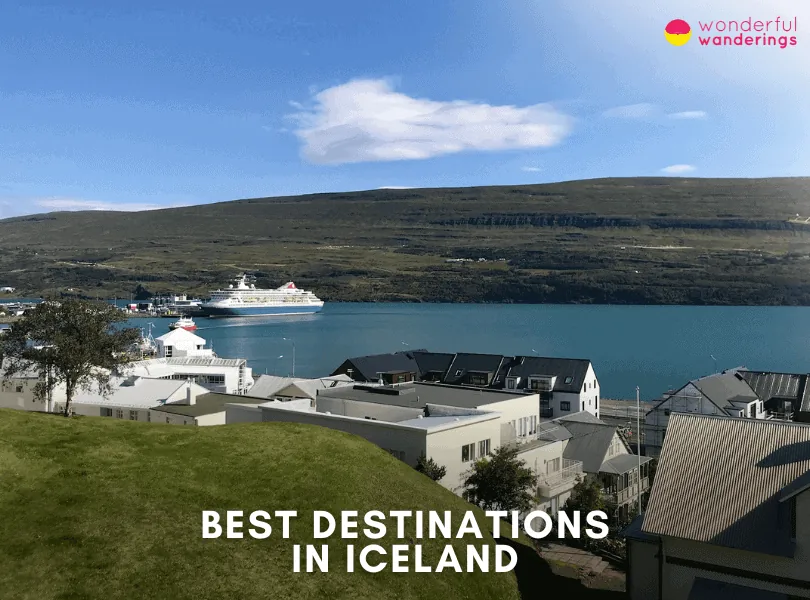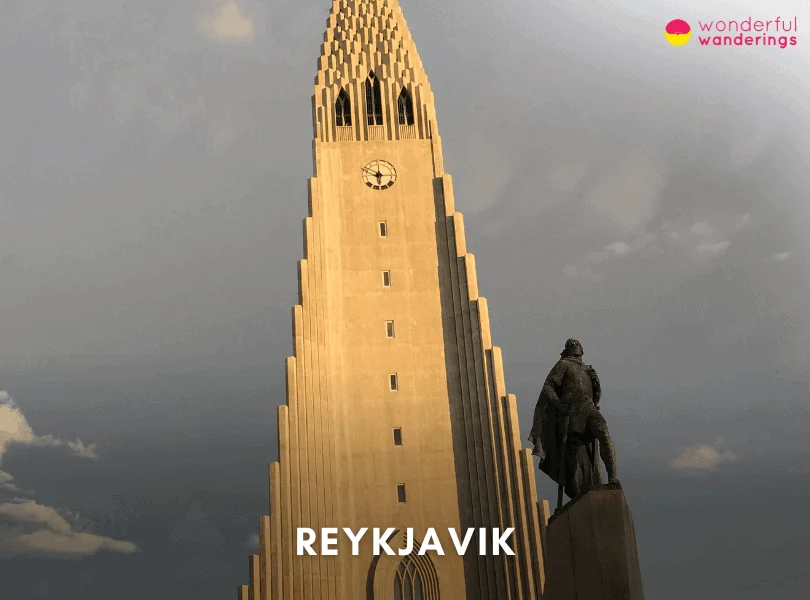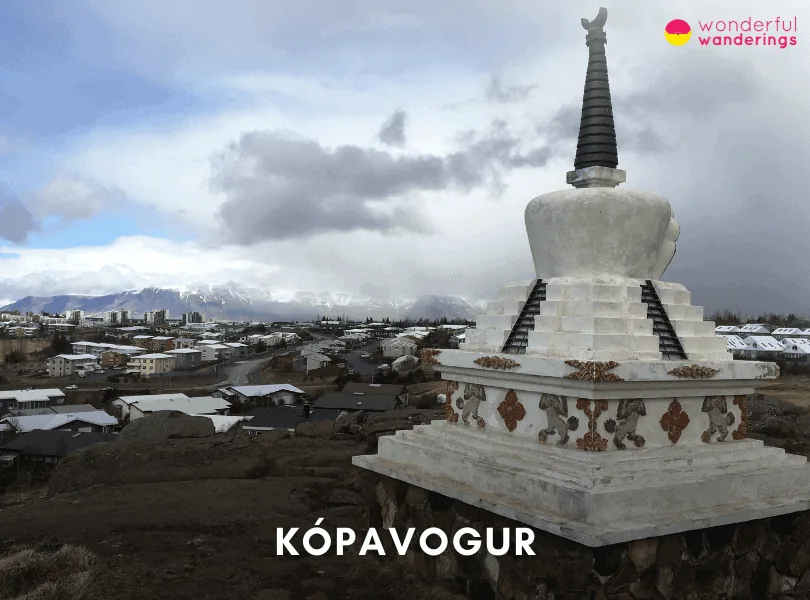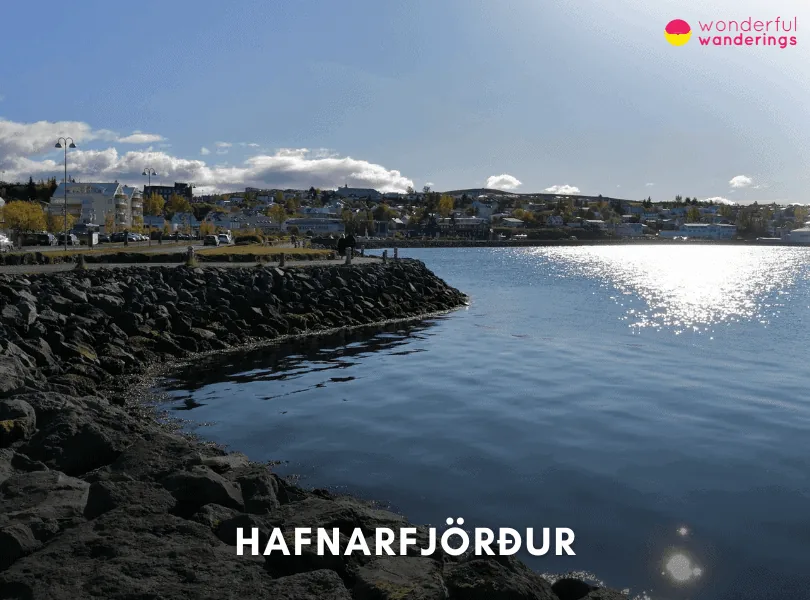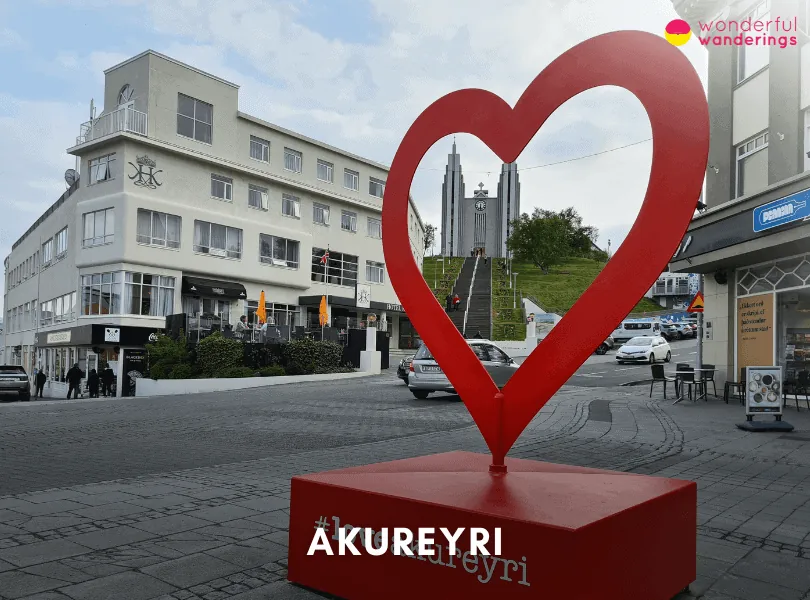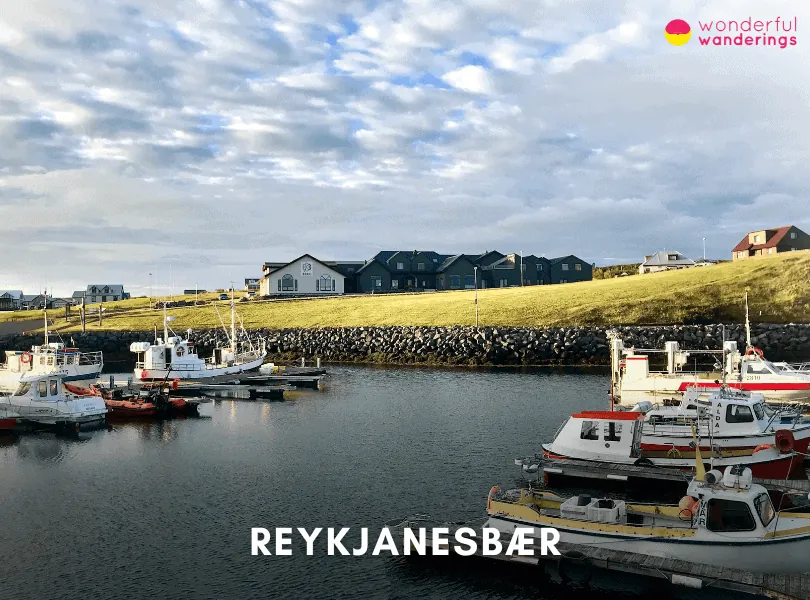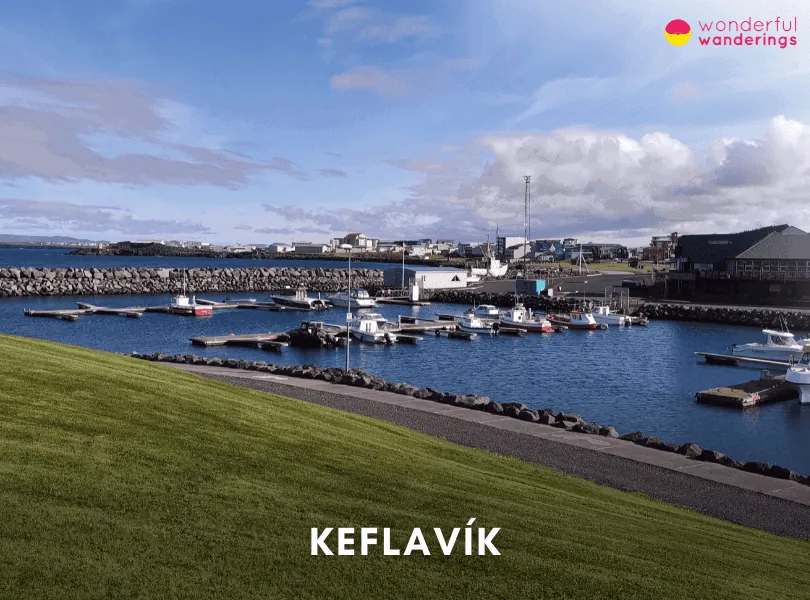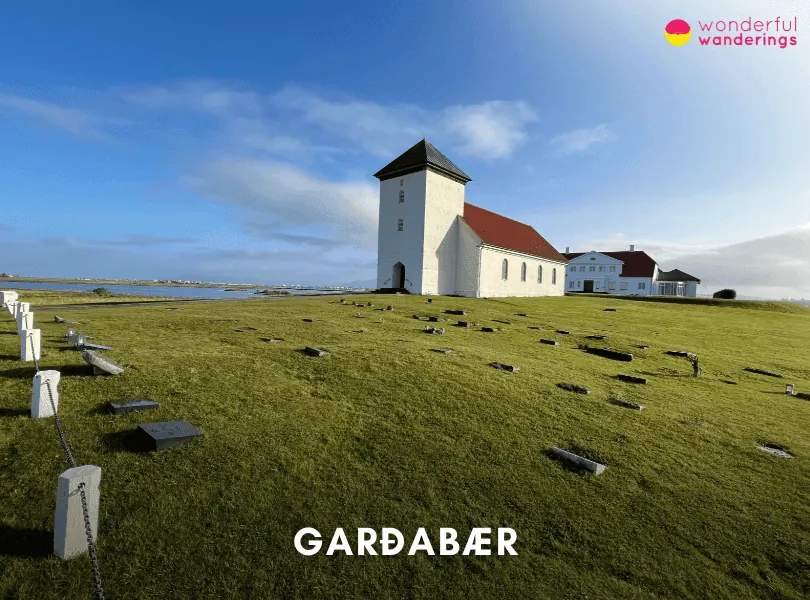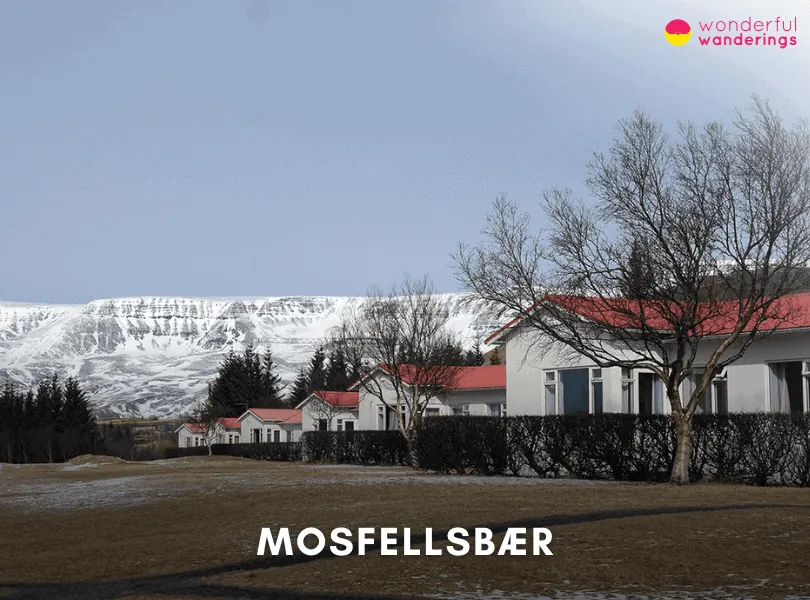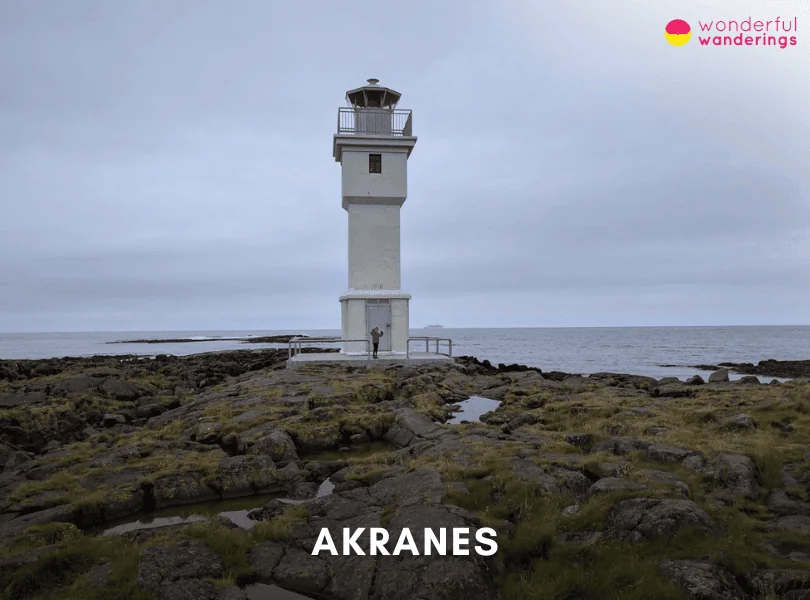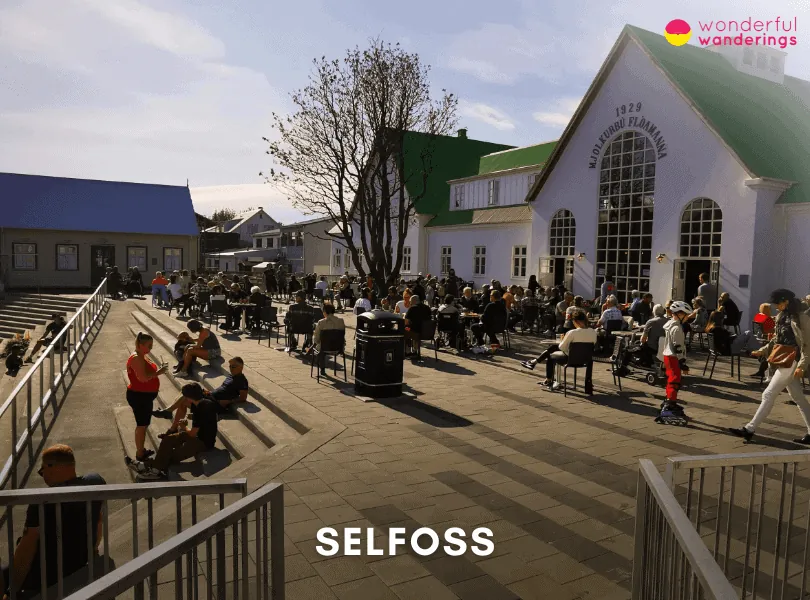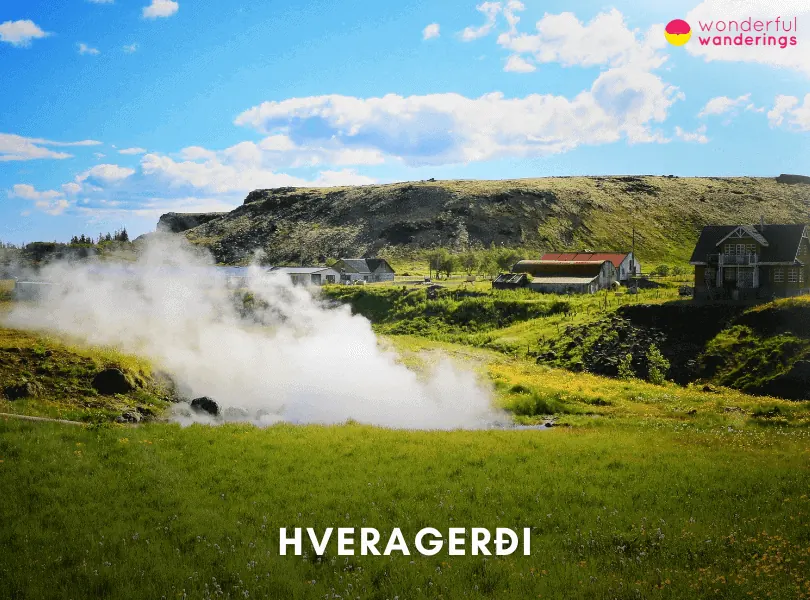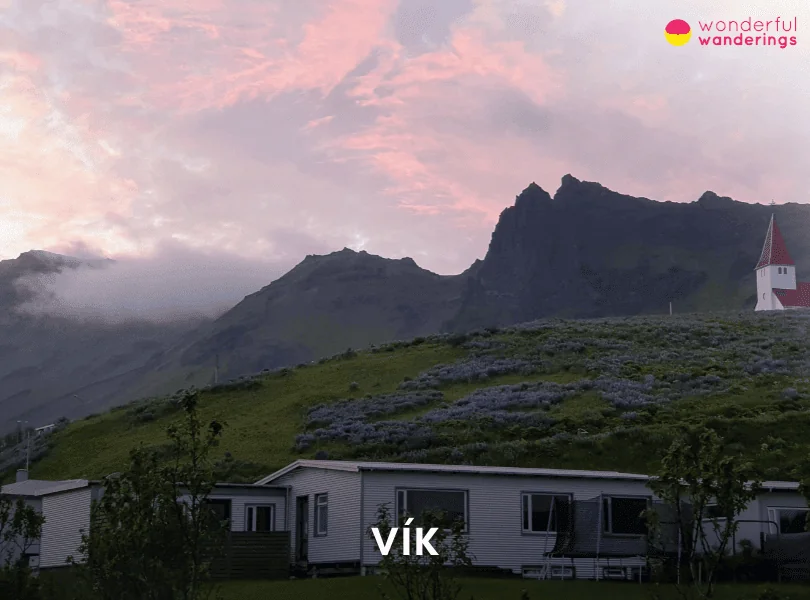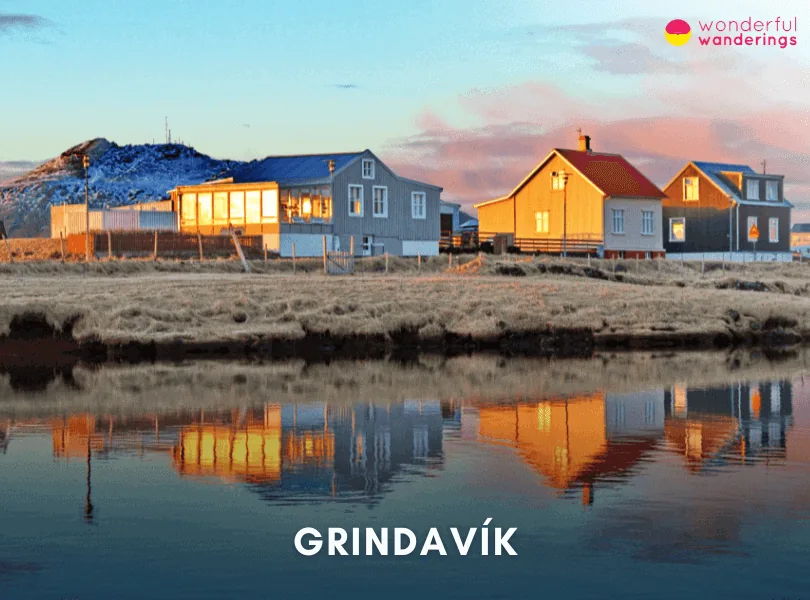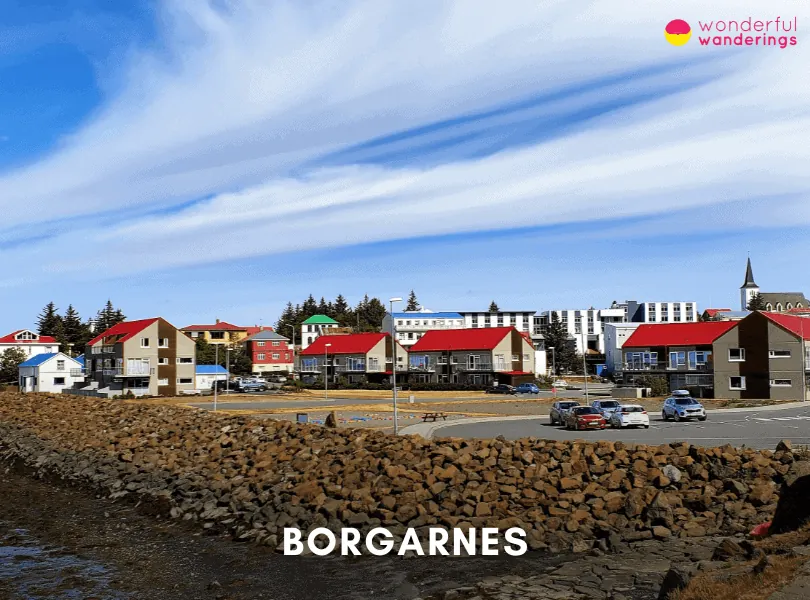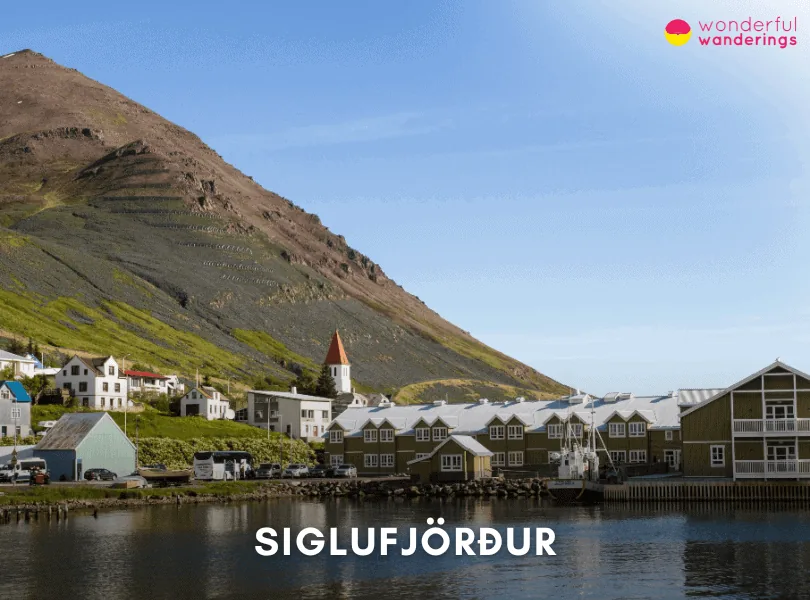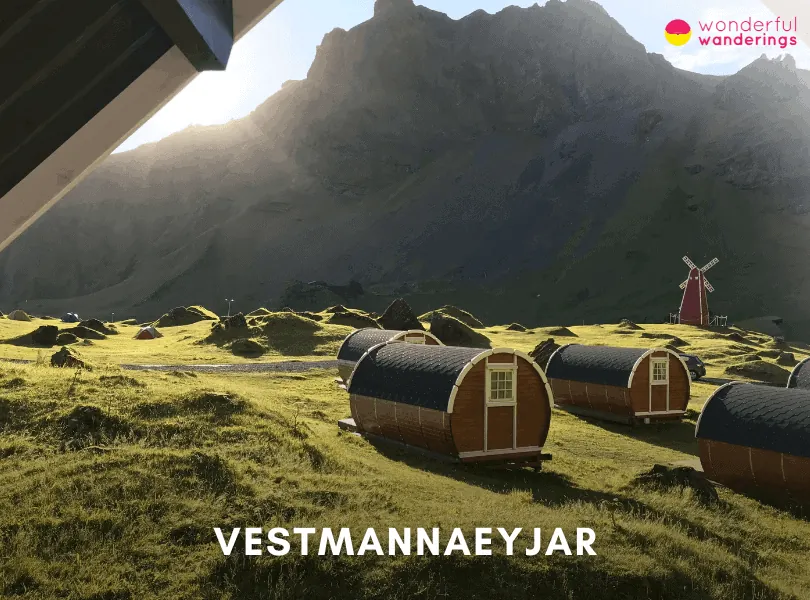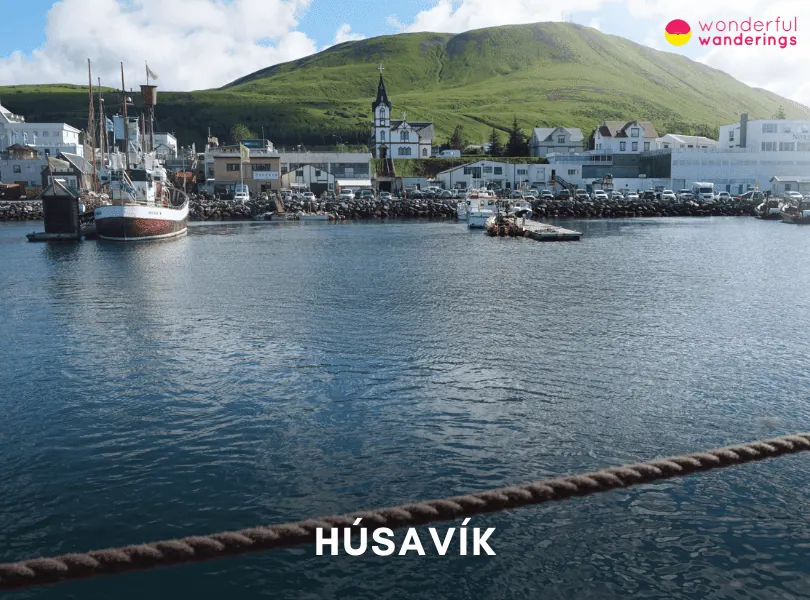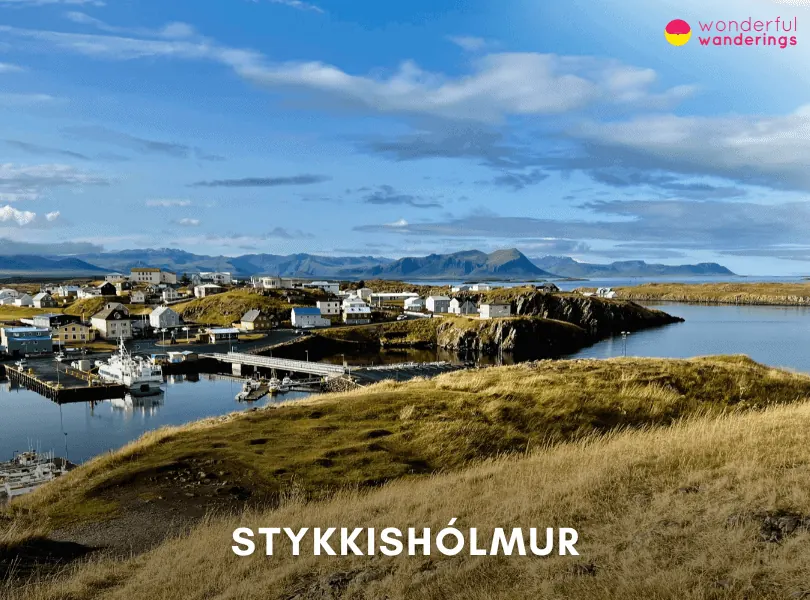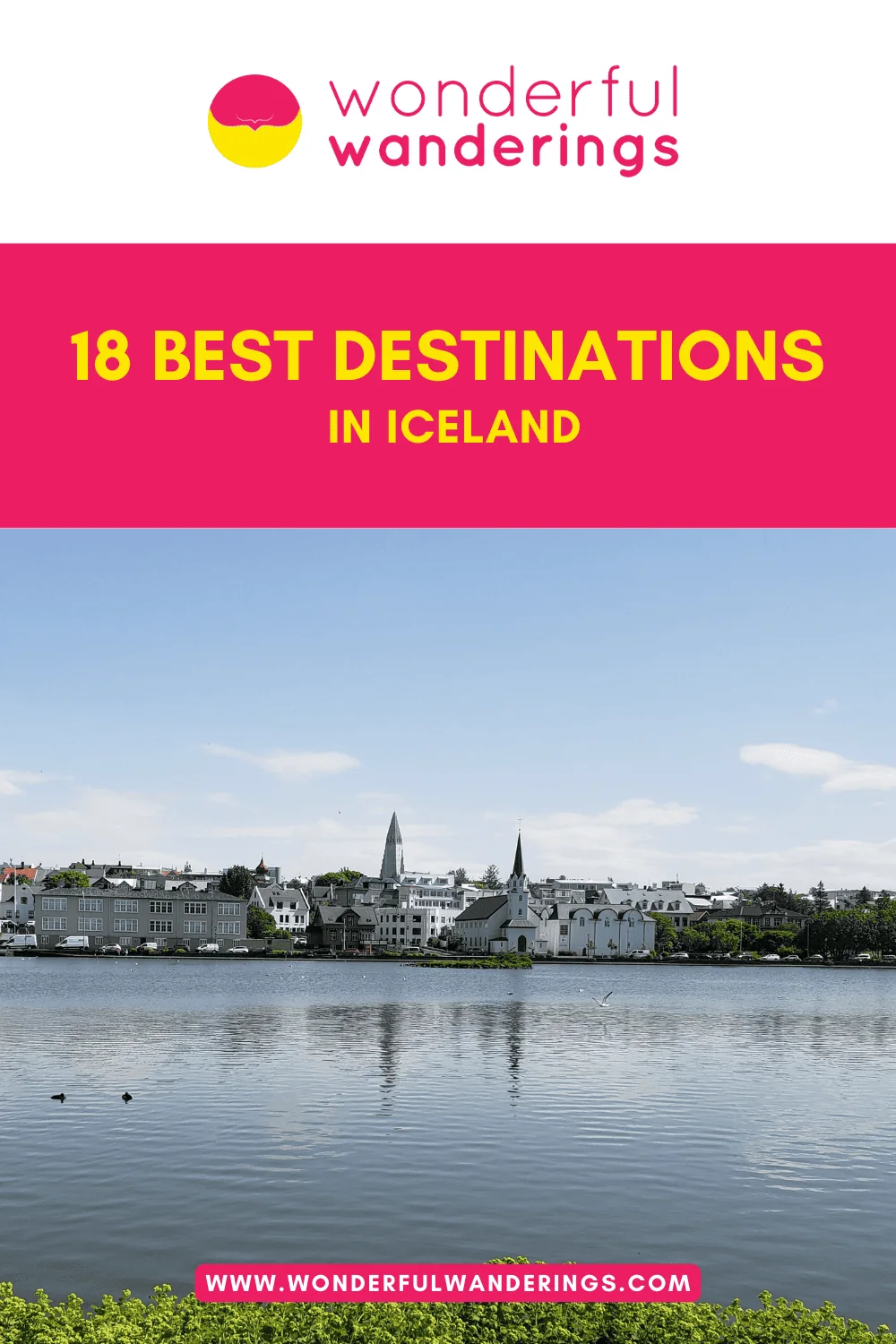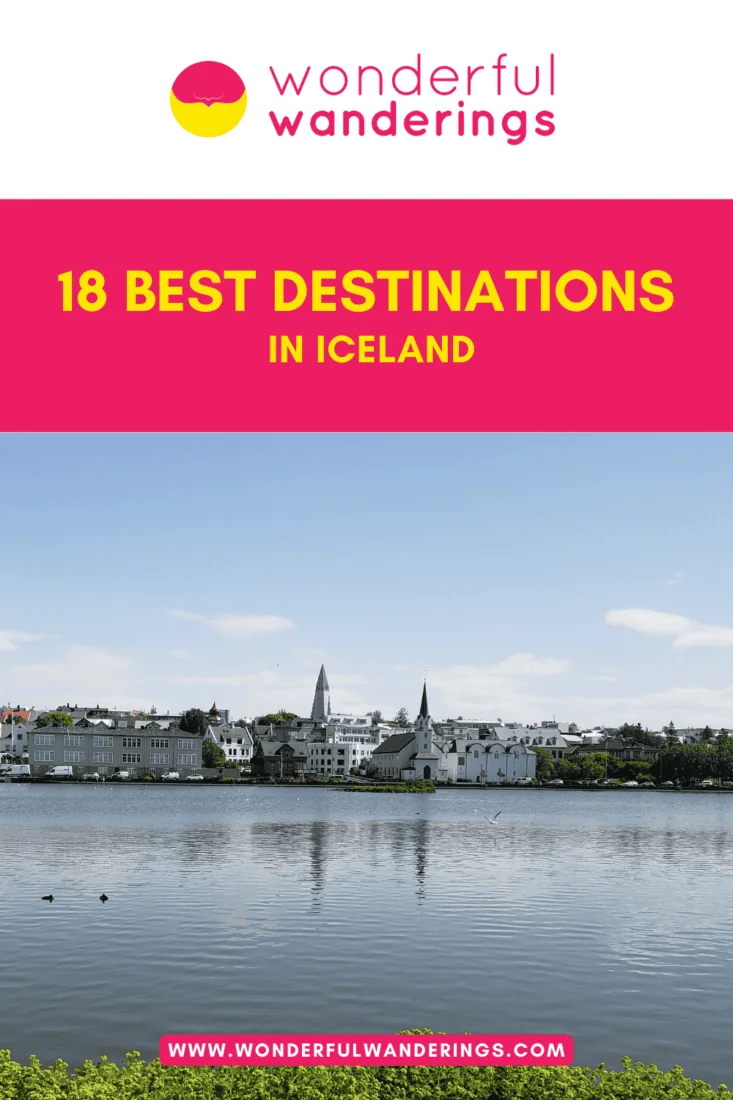Iceland is known for its landscapes and unique culture, which requires some preparation to ensure a fulfilling experience. Weather in Iceland is notably unpredictable and varies widely. Summers are superb, with average temperatures around 12-15°C (54-59°F) in Reykjavik, while winters are relatively mild but chilly, averaging around two °C (36°F) and dropping slightly below freezing. Laws and customs in Iceland reflect its low crime rates and high safety standards. Visitors should exercise common sense and be aware of strict regulations on importing certain items like food, alcohol, tobacco and weapons. Akureyri, known as the “Capital of North Iceland”, is one of the top destinations to visit in Iceland. It is known as Lystigarður Akureyrar botanical garden, rich in Icelandic and international flora and a cultural scene with art galleries, museums and live music, making it a hub for summer activities.
Reykjavik, Iceland’s capital and largest city, is a notable destination with key attractions like Hallgrímskirkja church and Harpa Concert Hall. Founded in 874 AD, it’s ideal for summer visits due to long daylight hours and cultural events. Nearby, Kópavogur, the second-largest municipality, offers views and landmarks like Kópavogskirkja church. Hafnarfjörður, known for its Viking heritage and attractions like the Viking Village, is just a short trip from Reykjavik. In northern Iceland, Akureyri is a cultural and educational hub with attractions like Akureyrarkirkja Church. Reykjanesbær, a merger of three towns, is known for the Viking World Museum and Blue Lagoon Spa. Keflavík, a port town, offers a rich music history and natural trails. Garðabær, a rapidly growing suburb of Reykjavik, combines modernity with historical roots.
Mosfellsbær, a “Green Town” near Reykjavik, offers natural beauty and historical sites like the Gljúfrasteinn Museum. Akranes, a port town with a strong football tradition, has attractions like Langisandur Beach and Akranes Folk Museum. Selfoss, a central hub in South Iceland, is ideal for exploring the Golden Circle route and other natural wonders. Hveragerði, known for its geothermal activity, offers unique attractions like the Hveragerði Geothermal Park. Vík, a coastal village, is famous for its black sand beach, Reynisfjara and the nearby Mýrdalsjökull glacier. Grindavík, a fishing town on the Reykjanes peninsula, is surrounded by dramatic landscapes and offers attractions like the Saltfish Museum. Borgarnes, a small town with a rich Viking history, features the Settlement Centre museum. Siglufjörður, once the “Herring Capital of the World”, has attractions like the Herring Era Museum and Folk Music Center. Vestmannaeyjar, an archipelago off the south coast, is known for its puffin watching and Eldheimar Museum. Húsavík, the “whale-watching capital of Iceland”, offers tours and the Húsavík Whale Museum. Stykkishólmur, a fishing town on the Snæfellsnes peninsula, is known for its historic wooden architecture and the Norwegian House museum. Each location offers unique experiences and is best visited during the summer for favorable weather and longer daylight hours.
1. Reykjavik
Reykjavik is Iceland’s capital and largest city. It is located in southwestern Iceland on the southern shore of Faxaflói Bay, which opens to the North Atlantic Ocean. The city has a population of 117,476 people as of 2023. Reykjavik is located on the southwest coast of Iceland at 64.1470° N and 21.9408° W on the Seltjarnarnes peninsula in southwestern Iceland. It sits across Faxaflói Bay from the Snæfellsnes and Reykjanes Peninsulas. Reykjavik is 2,336 km (1,452 miles) east of Toronto, Canada and 3,512 km (2,183 miles) west of Moscow, Russia, at similar latitudes near the Arctic Circle.
Reykjavik was established as a farmstead in 874 AD by Ingólfur Arnarson, Iceland’s first permanent Nordic settler. He built his home in an area he named Reykjavik (“Smoky Bay”) after the steam rising from nearby geothermal springs. Reykjavik started growing when the Alþingi was restored there in 1844. In 1874, Iceland was granted a constitution and limited home rule from Denmark. Reykjavik was made the capital of Iceland in 1918 when the country became a sovereign state under the Danish crown. Reykjavik’s top attractions include Hallgrímskirkja church, Harpa Concert Hall, the Sun Voyager sculpture resembling a Viking ship, Perlan Museum, the National Museum displaying Iceland’s Viking-era artifacts, the Old Harbor area, Laugardalur Valley and Árbæjarsafn open-air museum recreating Reykjavik life in the 19th-century.
Reykjavik is served by Keflavík International Airport, located around 50 km (31 miles) west of the city center, about a 45-minute drive away. The most convenient and affordable way to get to Reykjavik is to fly into Keflavík International Airport (KEF), Iceland’s main international airport 50 km west of the city and take a shuttle bus into town. Several shuttle bus companies like FlyBus and Airport Express operate regular service between the airport and various stops in central Reykjavik, with prices averaging ISK 2,990 (€19, $21, £17) each way.
The best time to visit Reykjavik is during the summer months between June and August when daylight hours are very long, average temperatures reach around 12°C (54°F) and more festivals and events are happening around the city. Most travelers find 2 to 4 days provides enough time to see Reykjavik’s top attractions while also taking a day trip or two outside the city.
2. Kópavogur
Kópavogur is Iceland’s second largest municipality by population after the capital Reykjavik. It is located in the Capital Region south of Reykjavik on the Faxaflói Bay. As of 2023, Kópavogur had a population of 31,333 residents living across an area of around 80 square km (30 square miles). It features primarily residential neighborhoods but also has some commercial zones and industrial areas. Kópavogur is situated at 64.1110° N and 21.9086° W on the southeast shore of Faxaflói Bay in southwestern Iceland. Kópavogur’s position on the bay provides residents and visitors views overlooking the ocean and islands like Akurey and Engey.
Kópavogur has a history dating back to Iceland’s early settlement. The area was mentioned in the 12th-century Book of Settlements, which records Ingólfur Arnarson as the first Norse settler of Iceland in 874 AD—several other notable Icelanders and events feature in Kópavogur’s history. The town originated as an agricultural district focused on dairy farming and livestock. As Reykjavik expanded rapidly after WWII, suburbs like Kópavogur grew significantly. As new homes were constructed, the population skyrocketed from just 2,500 in 1950 to over 25,000 by the 1990s.
Some of the main attractions and landmarks in Kópavogur include the Kópavogskirkja church, the tallest building in Iceland called Smáratorg Tower, the Gerpla sports complex, the Natural History Museum of Kópavogur and scenic coastal views. Visitors also enjoy Kópavogur’s scenic walking paths hugging the shoreline and waterfront areas like Kársnes Harbor, lined with cafes, shops and pleasant views across Faxaflói Bay. The nearest international airport to Kópavogur is Keflavík International Airport, 48 km (30 miles) west of the town. The drive takes around 35-45 minutes, depending on traffic. Iceland’s capital and largest city, Reykjavik, sits north of Kópavogur across Faxaflói Bay. Reykjavik’s city center is only 8 km (5 miles) north of Kópavogur, about a 15-minute drive.
The best time to visit Kópavogur is during the warmer summer months between June and August. Average summer highs reach around 12°C (54°F), days are very long, with nearly 21 hours of sunlight at the summer solstice and the weather tends to be more stable. This is the best season for enjoying Kópavogur’s coastal trails, parks and outdoor attractions. Kópavogur has enough attractions to keep visitors occupied for two full days and it is best experienced as part of a more extended Iceland trip with Reykjavik and the surrounding landscapes on the itinerary.
3. Hafnarfjörður
Hafnarfjörður is a port town and municipality located in south of Reykjavik. Iceland’s third-largest municipality, after Reykjavik and Kópavogur, has a population of 26,483 residents. Hafnarfjörður, which means “harbor fjord”, is a center of trade and commerce built around a natural harbor on the Faxaflói Bay. Hafnarfjörður lies at 64.0669° N, 21.9547° W on the Faxaflói Bay in southwestern Iceland. It sits just 10 km south of Reykjavik’s city center, about a 15-minute drive or 25 minutes by bus.
Hafnarfjörður has a long history dating to the Settlement of Iceland in the 9th-century AD—several key events and figures in Iceland’s history feature in the town’s origins. According to medieval Icelandic sagas, Norse explorer Ingólfur Arnarson became Iceland’s first permanent settler when he built his farm in the Hafnarfjörður area in 874 AD. The Book of Settlements also mentions Hafnarfjörður was home to Sölvi the Proud and other prominent Vikings. Through the centuries, Hafnarfjörður grew as a fishing and trading hub and remained a vital port.
Some top attractions in Hafnarfjörður include the Viking Village, the Hafnarfjörður Museum, the hidden people sculptures around town, the Old Town harbor area and the Fjörukráin café featured in the film The Secret Life of Walter Mitty. The easiest way to get between the airport and Hafnarfjörður is by shuttle bus, which covers the distance in around 45 minutes and costs about ISK 3,500 (€22, $24, £20) per person each way. The drive takes just over 30 minutes by car. Hafnarfjörður is part of the Greater Reykjavik Area, with Iceland’s capital located just a 15-minute drive or 25 minutes by bus.
The best time to visit Hafnarfjörður is during the summer months between June and early September when daylight hours are very long, average temperatures reach mild highs around 12°C (54°F) and drier weather makes exploring more pleasant. Hafnarfjörður has enough attractions to occupy visitors for two full days and it is best experienced as part of a more extended Iceland trip, including time in Reykjavik and seeing more beautiful surrounding landscapes.
4. Akureyri
Akureyri is a town on Iceland’s northern coast in the Eyjafjörður fjord. Often referred to as the “Capital of North Iceland”, Akureyri is an important port, fishing center, educational hub and cultural hotspot for the northern region. Akureyri is centered around 65.6826° N, 18.0907° W on Iceland’s northern coast, sitting on the southern shore of the Eyjafjörður fjord. Akureyri is tucked between the fjord and the mountains of the Tröllaskagi peninsula. It sprawls across the Glerá river delta, with the snow-capped Mt. Súlur peak visible south of town. As Iceland’s second-largest urban area, Akureyri has a population of around 17,477 residents within the town limits.
Permanent settlement began around 1778 and Akureyri was granted municipal status in 1786 by decree of King Christian VII of Denmark. The monarch of Iceland made it one of Iceland’s first towns. Akureyri began growing as a center of commerce and agriculture, situated by a vital port, sheltered by mountains and near fertile farmlands. During WWII, Allied forces were stationed in Akureyri, which brought prosperity. In the mid-20th century, Akureyri started transitioning from a rural village to an urban outpost as people increasingly migrated from countryside to town.
Top attractions in Akureyri include Akureyrarkirkja Church, Lystigarðurinn Botanical Gardens showcasing over 7,000 subarctic plant species, the Akureyri Museum, the Christmas Garden of Lights with Santa’s house, the Hof Cultural and Conference Center hosting events and concerts, whale watching and puffin tours in Eyjafjörður fjord. The most convenient way to reach Akureyri is by flying into Akureyri Airport (AEY). There are domestic flights to Akureyri from Reykjavik several times a day. Renting a car is also famous for easy access around the region. If coming overland, Akureyri is located along Iceland’s Ring Road. Buses run year-round between Akureyri and Reykjavik. During summer, Akureyri is also accessible by sea via cruise ship harbor calls.
The best time to visit Akureyri is between June and early September when temperatures are mildest, averaging around 12°C (54°F) daily highs and daylight hours are very long. This is the best season for outdoor activities like hiking, whale watching, golfing and exploring the countryside. Akureyri has enough attractions to keep visitors occupied for two full days and it is best experienced as part of a more extended Iceland trip, including time in Reykjavik and around North Iceland’s natural landscapes.
5. Reykjanesbær
Reykjanesbær is a municipality located on Iceland’s Reykjanes peninsula in the southwest part of the country. It has a population of around 20,000. It is Iceland’s fourth-largest municipality. Reykjanesbær was established in 1994 through the merger of three towns – Keflavík, Njarðvík and Hafnir. Reykjanesbær is centered around 63.9151° N, 22.5965° W on Iceland’s Reykjanes peninsula in the southwest part of the country. It sits on the coast of Faxaflói Bay, overlooking the North Atlantic Ocean. Reykjanesbær has close transport links to the money via Route 41.
The history of Reykjanesbær traces back to Iceland’s settlement in the 9th century AD—several notable Vikings and events are featured in the town’s early history. The Book of Settlements records Ingólfur Arnarson, recognized as the first Norse settler, building his farm in the Reykjanes area circa 874 AD. Through the centuries, fishing villages developed around the peninsula’s natural harbors. The population boomed after 1950 as the villages grew into towns. In 1994, the residents voted to merge Keflavík, Njarðvík and Hafnir into one municipality called Reykjanesbær to streamline local government.
Top attractions in Reykjanesbær include the Viking World Museum featuring a reconstructed Viking longhouse and ships, the Reykjanesviti lighthouse, the Bridge Between Continents and the Blue Lagoon geothermal spa. The municipality also serves as a base for day trips along the Golden Circle or the Icelandic highlands to see stunning nature. The easiest way to reach Reykjanesbær is by flying into nearby Keflavík International Airport, Iceland’s central air transport hub. The airport sits in Reykjanesbær and shuttle buses provide convenient connections for around 15 minutes for about ISK 3,500 (€22, $24, £20). Renting a car is also famous for flexibility in exploring Reykjanesbær and its surroundings. Reykjanesbær is also occasionally accessible by sea via cruise ship harbor calls.
The best time to visit Reykjanesbær is during the summer months between June and early September when daylight hours are very long, average temperatures reach mild highs around 12°C (54°F) and rain showers are less frequent. Reykjanesbær has enough attractions to occupy visitors for two full days. It is best experienced as part of a more extended 4-5 day Iceland trip, including time in Reykjavik and taking day trips around the Golden Circle and South Coast.
6. Keflavík
Keflavík is a port town on the Reykjanes peninsula in southwest Iceland. Keflavík is known for its thriving fishing and fish processing industries and proximity to Keflavík International Airport, the country’s primary air transportation hub. Keflavík sits at 63.9998° N, 22.5583° W on Iceland’s Reykjanes peninsula in the southwest part of the country, overlooking Faxaflói Bay and the North Atlantic Ocean. As Iceland’s fifth largest municipality, Keflavík has a population of 1999 residents. The town covers a landscape, including a coastline that provides views of nearby islands and the ocean.
Keflavík was founded in the 16th-century by Scottish merchants and engineers, establishing a trading post that went on to profit from the rich fishing grounds off Iceland’s southwest coast. Keflavík’s strategic location led to an airport being built there in 1942 and later a NATO military base that played a vital role in monitoring North Atlantic marine traffic during WWII and the Cold War years. The population boomed after 1950, with suburbs expanding. Once focused on fishing and fish processing, the local economy diversified. While retaining its historic charm, Keflavík is modern today and home to Iceland’s largest airport.
Top attractions in Keflavík include the harbor area lined with cafes, shops and views, the Icelandic Museum of Rock ‘n Roll showcasing the country’s music history and local bands, the hiking rugged lava trails to see volcanic craters and hot springs at places like Gunnuhver and Lake Kleifarvatn, Keflavík’s fishing heritage at sites like the old Pakkhús warehouse now housing a cultural center. The easiest and most common way to reach Keflavík is by flying to nearby Keflavík International Airport. Regular shuttle bus services connect the airport with Keflavík center, running about 6-8 times daily, with the drive taking only around 15 minutes. Keflavík is reachable by rental car or public bus from Reykjavik in just under an hour if already traveling in Iceland.
The best time to visit Keflavík is during the summer months between June and early September, when daylight hours are very long, average temperatures reach mild highs around 12°C (54°F) and rain showers are less frequent. September through April offer fewer crowds, lower prices and chances to see the Northern Lights over Keflavík. Keflavík itself has enough attractions to keep visitors occupied for two full days. It is best experienced as part of a more extended 4-5 day Iceland trip, including time in Reykjavik and taking day trips along the Reykjanes peninsula and nearby Golden Circle route.
7. Garðabær
Garðabær is a growing town located in the Capital Region of Iceland. Garðabær is a suburb that has developed rapidly in recent decades and is known for its natural surroundings, suburban neighborhoods, sports facilities and proximity to Reykjavik. It features one of Iceland’s most modern town centers at Garðatorg. Garðabær is situated at 64°08′N 21°49′W in the southwest of Iceland on the Faxaflói Bay. The town has a population of 11282 residents. The town is conveniently connected to Reykjavik and Keflavík International Airport. Its proximity to Iceland’s capitals makes Garðabær a popular suburb.
Garðabær has been inhabited since Iceland’s settlement by Norse Vikings in the 9th-century AD. Medieval records like the Book of Settlements mention two farms located where Garðabær now stands – Vífilsstaðir and Skúlastaðir. The area remained an agricultural, rural region focused on dairy farming for centuries. The town started developing in the mid-20th century as suburbs expanded to accommodate Reykjavik’s rapid urbanization after 1950. It preserves some of its historical rural roots while offering all the conveniences of contemporary Icelandic life.
Top attractions and landmarks in Garðabær include the Museum of Design and Applied Art, hosting exhibitions on Icelandic culture and design, the Árbæjarsafn open-air museum, the Álftaneslaug swimming pool facility featuring Iceland’s only wave pool and giant waterslides, the Hofsstaðir archaeological site showcasing the remains of a Viking age longhouse from 870-930 AD, the Bessastaðir national landmark and Hellisgerði Park’s geothermal area.
The easiest way to reach Garðabær is by rental car or taxi from Keflavík International Airport or Reykjavik, with driving times of 35-45 minutes and 15 minutes. Public buses run frequently between Reykjavik and Garðabær along Reykjanesbraut road, taking about 25 minutes for ISK 550 (€3.50, $3.75, £3.10) one-way. The best time to visit Garðabær is during the summer months between June and early September when daylight hours are very long, average temperatures reach mild highs around 15°C (59°F) and rain showers are less frequent. Garðabær has enough attractions and scenic nature to occupy visitors for two days. It is best experienced as part of a more extended 4-5-day Iceland trip.
8. Mosfellsbær
Mosfellsbær is a town in southwest Iceland, just a 15-minute drive from Reykjavik’s capital city. Nicknamed “The Green Town”, Mosfellsbær has a population of around 8545 residents. The town is characterized by beautiful nature with mountains, rivers, vegetation and greenhouses. Mosfellsbær provides a high quality of life through infrastructure, schools, healthcare, sports and recreation. Mosfellsbær has a long history dating back to the age of the Vikings in Iceland. Mosfellsbær is centered around 64°10′N 21°47′W in southwest Iceland. It sits in a valley between Mt. Helgafell and Mt. Mosfell along the Leirvogsá River, overlooking the ocean at Faxaflói Bay. As Iceland’s 8th largest municipality, Mosfellsbær in 2023 had a population of 12,073. Its proximity to Reykjavik, landscapes and wealth of outdoor recreation make it an attractive suburb.
Mosfellsbær’s history traces back to Iceland’s settlement by Norse Vikings in the 9th-century AD. According to legend, the famous warrior-poet Egil Skallagrímsson (910-990 AD) is supposedly buried near Mosfellsbær along with a trove of buried silver treasure. The Book of Settlements also records Ingólfur Arnarson, who was recognized as Iceland’s first permanent settler in 874 AD. Top attractions in Mosfellsbær include the Gljúfrasteinn Museum, the Álafosskvos, the Mosfellsbær Swimming Pool for year-round swimming and recreation, Varmárlaug natural geothermal pool, the Hraðastaðir Family Park petting zoo and stunning nature like Helgafell and Mosfell mountains.
The easiest way to reach Mosfellsbær is by rental car or taxi from Keflavík International Airport or Reykjavik, with driving times of 35-40 minutes and 15-20 minutes, respectively. Public buses run frequently along Route 1, connecting Reykjavik with Mosfellsbær, taking about 30 minutes for ISK 550 (€3.50, $3.75, £3.10) one-way. The best time to visit Mosfellsbær is during the summer months between June and early September when daylight hours are very long, average temperatures reach mild highs around 15°C (59°F) and rain showers are less frequent. Mosfellsbær has enough attractions and scenic nature to occupy visitors for two days. It is best experienced as part of a more extended 4-5 day Iceland trip, including time in Reykjavik and popular day trips to places like the Golden Circle with its famous geothermal areas and waterfalls.
9. Akranes
Akranes is a port town on Iceland’s west coast, approximately 42 km (26 miles) north of Reykjavik’s capital. The town is known for its strong football tradition, culture centered around the Akranes Folk Museum and surrounding mountains, islands and ocean views. Akranes sits at 64.3219° N, 22.0703° W on the tip of the Akranes peninsula on Iceland’s west coast, overlooking Faxaflói Bay. Akranes is conveniently connected to Iceland’s capital, Reykjavik and Keflavík International Airport via Route 51 with average driving times of 45 minutes and 1 hour 15 minutes. Akranes has a population of 6531 residents.
Akranes was first settled in the 9th-century AD by brothers Þormóður and Ketill, who arrived from Ireland. The small fishing village grew slowly over the centuries before officially becoming a town in 1942 when Akranes was formally chartered. This marked the beginning of a population boom, with suburbs expanding to accommodate Iceland’s rapid 20th-century urbanization. The town has diversified more in recent decades, with a cement plant built in the 1950s and an aluminum smelter opened near Akranes in 1998.
Top attractions in Akranes include Langisandur Beach, Akranesviti Lighthouse, Akranes Folk Museum, Akrafjall Mountain and the Neðri-Sýrupartur House, which is the oldest preserved timber house in Akranes dating from 1875. The easiest way to reach Akranes is by driving north along Route 51 from Reykjavik, which takes around 45 minutes by car. Renting a vehicle allows flexibility for side trips and attractions around the Akranes peninsula. Strætó buses run regularly between Akranes and several Reykjavik stops like Hlemmur station, taking about 1 hour.
The best time to visit Akranes is during the summer months between June and August when the weather is mildest in Iceland. Visitors can enjoy nearly 21 hours of daylight to explore attractions, average temperatures around 12°C (54°F) and more stable weather than other seasons. Akranes has enough attractions to visit for two full days. It is best experienced as part of a more extended 4-5 day Iceland trip, including time in Reykjavik and taking drives into the Snæfellsnes Peninsula and Westfjords regions.
10. Selfoss
Selfoss is a town located in the southern region of Iceland on the banks of the Ölfusá River. It has a population of around 6,512 people and it is the largest town outside the Greater Reykjavik capital area in southwest Iceland. Selfoss is an important center of South Iceland’s commerce, farming, horticulture and small industries. It is one of the last stops when heading towards the southern coast, making it a popular base to explore attractions like the Golden Circle route, black sand beaches, glaciers and waterfalls. Selfoss is centered at 63.9318° N, 20.9997° W in Iceland’s fertile south region overlooking the Ölfusá River. Selfoss has a population of 6430 residents and the position provides pleasant views while being a hub connecting the capital area with southern Iceland.
The history of Selfoss dates back to Iceland’s first settler, Ingólfur Arnarson, who wintered in the area in 873-874 AD. This boosted commerce and trade, causing the population to grow. Still mainly focused on agriculture and dairy farming, Selfoss evolved into a center for business and industry, supporting the whole South Iceland area after getting municipal rights in 1945. Top attractions in Selfoss include the Ölfusá River, the Ölfusárbrú suspension bridge from 1891, the Bobby Fischer Center chess museum, Selfosskirkja church, the Selfoss swimming pool, Tryggvaskáli restaurant in Iceland’s oldest house, the Foodhall community with restaurants and the Skyr museum, Sumar á Selfossi summer festival and nature like Mt. Ingólfsfjall and Hellisheiði plateau, perfect for hiking.
The easiest way to reach Selfoss is by driving southeast from Reykjavik along the Ring Road/Route 1. If traveling by public transport, Strætó buses run regularly between Reykjavik and Selfoss with frequencies of 9 buses per day, taking around 75 minutes for fares of ISK 1,100 (€7, $8, £6.50) each way. The best time to visit Selfoss is during the summer months between June and early September when daylight hours are very long, average temperatures reach mild highs around 15°C (59°F) and rain showers are less frequent. Selfoss has enough attractions and beautiful nature to occupy visitors for two full days. It is best experienced as part of a more extended 4-5 day Iceland trip, including time in Reykjavik and taking popular Golden Circle day tours.
11. Hveragerði
Hveragerði is a town and municipality located east of Reykjavik in Iceland’s southwestern region. Hveragerði is often called the “hot spring town” or “earthquake town” due to its active geothermal area. Hveragerði is centered around 63.9984° N, 21.1886° W in Iceland’s fertile south region. Hveragerði municipality has a population of 2259 residents, giving a population density of urban and rural areas. Its proximity to Reykjavik and sitting aside the major Route 1 highway make Hveragerði easily accessible for travelers. The history of Hveragerði traces back to Iceland’s settlement by Norse Vikings in the late 9th-century AD. Ingimundarson, “the Wise”, from Norway, settled the area of present-day Hveragerði in 865 AD. In 1226, an earthquake rocked the region surrounding Hveragerði. This spurred population growth over the following decades. The town was hit by another strong earthquake in 2008, which damaged infrastructure.
Top attractions around Hveragerði include the hot spring river and hiking trail in Reykjadalur Valley, the Hveragerði Geothermal Park, the Hveragerði Stone and Mineral Museum displaying Iceland’s exotic geology, the LÁ Art Museum, the main street Breiðumörk lined with cafes and nature like the Ölfusá River and Hengill volcano area. The easiest way to reach Hveragerði is by driving southeast from Reykjavik along the Ring Road/Route 1, which takes 35 minutes to cover by car. Renting a vehicle allows flexibility for side trips and detours. The journey takes around 1 hour 30 minutes.
The best time to visit Hveragerði is during the summer months between June and August when daylight hours are very long, average temperatures reach mild highs around 15°C (59°F) and rain showers are less frequent. This is the best season to enjoy hiking and bathing in hot springs. Hveragerði has enough attractions and nature to visit for two full days. It is best experienced as part of a more extended 4-5 day Iceland trip, including time in Reykjavik and taking day trips to popular South Iceland attractions.
12. Vík
Vík is a small coastal village located on Iceland’s South Coast, about 180 km (110 miles) southeast of Reykjavik. Vík is a crucial service town and a popular tourist stopover touring Iceland’s south coast. It is situated between the glaciers Mýrdalsjökull and Eyjafjallajökull, overlooking the North Atlantic Ocean. Vík is located at 63.4177° N, 18.9974° W on Iceland’s South Coast in the Mýrdalur valley, overlooking the Atlantic Ocean and black sand Mýrdalssandur plains. The population of Vík village is 271 residents, including its outskirts. The Norse Viking Ingólfur Arnarson first settled Vík in around 874 AD upon the original founding of Iceland. The small village as it looks today began emerging in the late 19th-century when traders established more permanent commercial operations catering to the region’s farmers and fishing activity.
Top attractions around Vík include Reynisfjara, the black sand beach with geology of hexagonal basalt columns and rock formations like the Reynisdrangar sea stacks just offshore, Mýrdalsjökull glacier, where we can take adventure tours to hike across the icy cap or enter ice caves inside, Katla Geopark’s hiking trails and sights related to volcanology and Katla’s eruptions. The most convenient way to reach Vík is by rental car or a 4×4 camper van rental, allowing the flexibility to take detours along Iceland’s South Coast. There are also regular public buses running year-round between Reykjavik and Vík, with several buses daily operated by companies like Strætó.
The best time to visit Vík is during the summer months between June and August when daylight hours are very long, average temperatures reach mild highs around 12°C (54°F) and drier weather makes exploring more pleasant. Vík makes a popular stopover for a few hours as part of day tours along Iceland’s south coast. Spending 1-2 full days allows to better explore the village’s attractions and natural surroundings at a relaxed pace.
13. Grindavík
Grindavík is a small fishing town on the Reykjanes peninsula in southwest Iceland. It has a population of 2820 and covers an area of 425 square km (164 square miles). Grindavík is on an expansive lava field surrounded by dramatic volcanic mountain peaks. Its geographical coordinates are 63.8434° N and 22.4360° W. It is located at the southern edge of the Reykjanes Peninsula, 52 km (32 miles) southwest of Reykjavik and 24 km (15 miles) southeast of Keflavík International Airport. It overlooks Faxaflói Bay and sits amidst the moss-covered lava fields of the Reykjanes UNESCO Global Geopark.
Grindavík was first settled around 934 AD by two Viking explorers named Molda-Gnúpur Hrólfsson and Þórir Haustmyrkur Vígbjóðsson. Their descendants established three main farmstead areas that developed into settlements – Þórkötlustaðahverfi, Járngerðarstaðarhverfi and Staðarhverfi. The modern town of Grindavík emerged mainly from the Járngerðarstaðarhverfi district. Grindavík soon became a vital fishing village and trading port. Commercial fishing has remained crucial to the town’s survival and economy for centuries despite the inherent dangers of seafaring. Grindavík’s main attractions drawing visitors today include the Saltfish Museum, Mt. Þorbjörn and the harbor, where visitors can witness Iceland’s ongoing fishing culture firsthand.
The easiest and most efficient way to reach Grindavík is by rental car. The town lies directly along Iceland’s Ring Road, Route 41, which connects Keflavik Airport and Reykjavik to attractions like the Blue Lagoon and Iceland’s South Coast. The drive from Reykjavik takes around 50 minutes. Tour and public buses for visitors without cars also provide connections from Reykjavik and the airport to Grindavík. The best time to visit Grindavík is during the warmer months between May and September. Average temperatures typically range from 5°C to 12°C (low 40s F to mid-50s F), ideal for enjoying the abundance of outdoor attractions in the area. Most visitors spend 1-3 days exploring Grindavík and the surrounding Reykjanes Peninsula.
14. Borgarnes
Borgarnes is a small town in west Iceland on the Borgarfjörður peninsula. Borgarnes is situated in west Iceland along the Borgarfjörður fjord, about 75 km (47 miles) north of Reykjavik. It sits at the base of Langjökull and Eiríksjökull mountains on the Borgarnes Peninsula in the region known as Vesturland. The GPS coordinates for Borgarnes are 64.5446° N, 21.9105° W. Around 1736 people reside in Borgarnes, while about 3,800 people live in the surrounding rural municipalities that look to Borgarnes as a central hub. Borgarnes has a history stretching back to the initial Norse settlement of Iceland. Skallagrímur chose to settle in the Borgarfjörður region, calling his farmstead Borg. The town that grew around this farm then became known as Borgarnes (“Nes” meaning peninsula). Skallagrímur is buried in a small park in the middle of town known as Skallagrímsgarður, which marks his grave. His son Egill was the hero of the medieval Icelandic Egils Saga, devoted to his adventures as a Viking poet-warrior. The saga is closely tied to the Borgarfjörður area where Egill lived.
Borgarnes has several attractions for visitors to explore. The Settlement Centre is an award-winning museum with two exhibitions about Iceland’s settlement and Egill Skallagrímsson. Skallagrímsgarður is a small park in central Borgarnes that contains the grave of Egill’s father, Borg á Mýrum. Borgarnes Swimming Pool is a local favorite, with indoor and outdoor pools, hot tubs and water slides, making it great for families. The most common and easiest way to reach Borgarnes is by car, driving along Iceland’s Ring Road, Route 1, which goes straight through the town. Route 1 connects Borgarnes with Reykjavik and Keflavik International Airport to the south and northern sites like Snæfellsnes and Akureyri. Those without cars can take a bus from Reykjavik BSI terminal run by companies like Straeto, which offer multiple daily departures to Borgarnes along the Ring Road for around ISK 2,600 (€17, $19, £15) each way.
The best time to visit Borgarnes is during the warmer months between May and September. Summer from June through August brings the most pleasant weather, with average highs around 12°C (54°F) and low chances of rain or snow. Endless daylight allows for exploring attractions and nature until late at night. Most visitors spend 1-2 days exploring Borgarnes and the surrounding areas. The town can be seen in just a day, allowing time for the Settlement Centre, Skallagrímsgarður Park, swimming pool and a meal or coffee break at places like the Englendingavík village.
15. Siglufjörður
Siglufjörður is a small fishing town located in a narrow fjord of the same name on the northern coast of Iceland. It was the epicenter of herring fishing in the North Atlantic, earning it the nicknames “Herring Capital of the World” and “Klondike of the North”. Siglufjörður lies in a sheltered fjord on the northern coast of Iceland at the tip of the Tröllaskagi Peninsula in the Northeast region. Its GPS coordinates are 66°8′58′′N 18°53′58′′W. It has around 1174 people reside in Siglufjörður as of 2023. Siglufjörður sits about 80 km (50 miles) from the nearest city of Akureyri if driving non-stop along the Ring Road and Route 76. Reykjavik is a 385-km (240-mile) drive or about a 4.5-hour journey by car.
The history of Siglufjörður stretches back to Iceland’s initial settlement in the 9th-century when Norse Vikings established fishing villages along the northern coasts. The town itself did not begin forming until the early 20th-century. But after 1900, developers recognized Siglufjörður’s excellent natural harbor and investments poured in to launch a significant commercial herring fishery. It was northern Iceland’s largest and most prosperous town by the 1950s, with over 10,000 seasonal workers and one of Europe’s biggest fishing fleets.
Siglufjörður’s main attractions include the Herring Era Museum, Folk Music Center and Marina and Harbor. Visitors can explore scenic hiking trails like Héðinsfjörður and Trollaskagi Peninsula, hit the slopes at the top ski area and take a tour of the local craft brewery, Seagull 67. The most popular and easiest way to reach Siglufjörður is by rental car, taking the incredibly scenic Route 76 road on the western side of the Tröllaskagi Peninsula. Route 76 winds through striking landscapes past sights like Hofsós and connects Siglufjörður to the Ring Road near Varmahlíð. The bus takes about 1 hour and 15 minutes, with standard one-way fares costing around ISK 3,300 (€22, $24, £19).
The best time to visit Siglufjörður is during the warmer months between June and early September. This summer’s high season sees the most sunlight, mildest weather and comprehensive attractions, tours and events happening in town. Daily average temperatures range from around 42°F to 57°F (6°C to 14°C), with precipitation less likely. Most visitors spend at least two full days exploring Siglufjörður and the surrounding region. This allows enough time to see cultural attractions like the Herring Era Museum, enjoy hiking trails when conditions allow, relax at sites like the harbor and sample local cuisine.
16. Vestmannaeyjar
Vestmannaeyjar, often called the Westman Islands in English, is an archipelago off the south coast of Iceland consisting of 15 islands and around 30 rock stacks and skerries. The largest island is Heimaey, which has a population of 4,167 and is the only permanently inhabited island in the group. Vestmannaeyjar is very young, having formed from volcanic eruptions over the past 10,000-12,000 years. The largest town and center of activity is Heimaey, which is located on Heimaey Island. This island has GPS coordinates of 63°26′N 20°17′W. The entire archipelago is part of Iceland’s Southern Region.
The recorded history of Vestmannaeyjar dates back to Iceland’s settlement by Norse Vikings in the late 9th-century. The islands are named after a group of Celtic enslaved people, called “Westmen” by the Norse, who fled to Vestmannaeyjar in around 875 after murdering their master Ingólfur Arnarson’s brother. In the 20th-century, Vestmannaeyjar modernized with an expanding puffin hunting industry. The most impactful occurrence happened in 1973 when the previously unknown Eldfell volcano suddenly erupted after thousands of years of dormancy.
The Vestmannaeyjar islands offer diverse attractions, making them an ideal destination for travelers. Some top attractions are the Eldheimar Museum, Skansinn Fortress, Solfar sculptures and panoramic views. Nature lovers will be delighted with Elephant Rock, an unusual rock formation off Heimaey’s coast resembling an elephant head, a famous sight on boat tours. The Stórhöfði area is a prime spot for puffin watching. The Sæheimar Aquarium is another must-visit place, the Vestmannaeyjar Golf Club and Herjólfsdalur Valley offers a hiking trail past sites like the old Herjólfsdalur Church.
The most popular and convenient way for travelers to reach the Vestmannaeyjar islands is via the car and passenger ferry Herjólfur. The ferry leaves from the Landeyjahöfn harbor on Iceland’s south coast, connecting the mainland to the town of Heimaey on the islands in just 35 minutes. Ferry crossings run multiple times per day year-round, with extra departures added during summer. The standard fare is ISK 1,550 (€10, $11, £9) each way per adult passenger. The best time to visit Vestmannaeyjar is between June and August during the warmer summer. Most visitors spend at least two days exploring Vestmannaeyjar to make the trip from mainland Iceland worthwhile.
17. Húsavík
Húsavík is a small town on the north coast of Iceland along the shores of Skjálfandi Bay. Húsavík is often called the “whale-watching capital of Iceland. ” Up to 23 different whale species have been spotted in and around Skjálfandi Bay, drawing visitors from around the world to partake in whale-watching tours operated out of Húsavík’s harbor. Húsavík lies on Iceland’s north coast along the shores of Skjálfandi Bay in the Northeast region, about 41 miles (66 km) south of the Arctic Circle. Its precise GPS coordinates are 66°04′08′′N 17°20′07′′W. The town population is around 2200 people residing in Húsavík as of 2023.
Húsavík was the first site in Iceland settled by the Norse when a Swedish Viking named Garðar Svavarsson overwintered there in approximately 870 CE. He built a homestead that gave Húsavík its name, meaning “Bay of Houses”. Garðar’s slaves then remained behind to establish a farm when he departed. Húsavík slowly grew from Garðar’s abandoned farm into a modest fishing village specializing in shark hunting over the following centuries. Whale watching is a must-do activity in Húsavík and explore the Húsavík Whale Museum. The Settlement Centre brings Iceland’s early settlement history to life through exhibits tied to Ingólfur Arnarson and Egill Skallagrímsson.
The most popular and easiest way to reach Húsavík is by rental car, taking the scenic Route 85 road northeast along the coast of Skjálfandi Bay from Akureyri or directly north on Route 1, the Ring Road. The best time to visit Húsavík is during the summer months between June and August. The long daylight hours, mild weather and lack of rain make it perfect for whale watching and other outdoor pursuits. Average summer highs reach around 57°F (14°C). Most visitors spend 2-3 days exploring Húsavík and the surrounding region’s top attractions. This allows enough time to take a whale-watching tour, visit the Settlement Centre and Whale Museum, hike trails around Ásbyrgi Canyon and relax by soaking in the GeoSea baths.
18. Stykkishólmur
Stykkishólmur is a fishing town on the Snæfellsnes peninsula’s northern shore in west Iceland. Stykkishólmur lies on the northern coast of the Snæfellsnes peninsula in west Iceland. It sits at the peninsula’s tip, overlooking countless islands in Breiðafjörður Bay. Stykkishólmur’s GPS coordinates are 65°5′N 22°43′W. Around 1093 people reside in Stykkishólmur. The town is located in Iceland’s Western Region and is part of the municipality of Stykkishólmshreppur.
The history of Stykkishólmur stretches back to the days of early Norse settlement in Iceland. The town’s natural harbor was recognized early on as a prime trading site. The first trading post was established there around 1550, before the era of the Danish Trade Monopoly. Stykkishólmur became important as a trading town when the Danish Monopoly system was implemented from 1602 to 1787. Later, the town became a center for shark hunting and fishing. Stykkishólmur modernized in the 20th-century but maintained its charming historic wooden architecture.
One of the main attractions is the Norwegian House – Iceland’s oldest preserved wooden house from 1832, which now houses a regional museum. Another must-see is the Stykkishólmskirkja Church, the Nesset Peninsula Hike, Súgandisey Island, Stykkishólmur and Breiðafjörður’s islands. Art enthusiasts must visit the Library of Water and Breiðafjörður Bay Tours offers boat rides. The most popular and easiest way to reach Stykkishólmur from Reykjavik is by rental car. Visitors can take the scenic Route 54 road northwest, followed by Route 1 north, on a 2.5-hour drive through incredible landscapes along the Hvalfjörður fjord and up the Snæfellsnes Peninsula’s coastline before arriving.
The best time to visit Stykkishólmur is during the warmer summer months between June and August. The long daylight hours, mild weather, lack of rain and most open amenities make it perfect for outdoor activities. Most visitors spend at least two full days exploring Stykkishólmur and the top attractions around the Snæfellsnes Peninsula.
What is the best place to visit in Iceland during the summer?
Akureyri, often regarded as the “Capital of North Iceland”, is the best place to visit during summer. One of Akureyri’s main attractions is its botanical garden, Lystigarður Akureyrar, which is remarkable for its extensive collection of both Icelandic and international flora. The town also boasts a cultural scene with art galleries, museums and live music events. Visitors will find plenty to do, from hiking in the nearby mountains to whale-watching tours in the fjord. The town is also a gateway to some of Iceland’s most famous attractions, such as the Mývatn Lake, the Goðafoss Waterfall and the volcanic landscape of Krafla. The long days of summer with nearly 24-hour daylight provide an opportunity to explore and enjoy Akureyri. Its destination makes it a top must-visit for visitors in Iceland in the summer.
What is the best place to visit in Iceland during the winter?
Iceland’s best place to visit during summer is Reykjavik, the country’s capital and largest city. Reykjavik transforms into a winter wonderland with festive lights, cafes, restaurants and cultural events. A major highlight of visiting Reykjavik in winter is witnessing the Northern Lights. The city’s coastal location and surrounding areas provide excellent viewpoints for this light show. Reykjavik serves as a convenient base for various winter excursions, including snowmobiling on glaciers, visiting the famous Golden Circle or relaxing in the geothermal waters of the Blue Lagoon, which is especially enchanting amid the winter landscape. Reykjavik also boasts a culinary scene where visitors can indulge in traditional Icelandic cuisine, such as lamb and seafood, often with a modern twist.
What is the best place to visit in Iceland during Christmas time?
The best place to visit during Christmas time in Iceland is Reykjavik. Reykjavik transforms into a winter wonderland with Yuletide spirit and Icelandic traditions. One of the highlights of Reykjavik during Christmas is its famous Christmas markets, such as the one at Ingólfstorg Square, where visitors can find unique Icelandic crafts, warm knitwear and delightful Christmas treats. The city is also known for its Christmas concerts and events, ranging from classical music performances to lively Christmas shows.
What are the best activities to do during the summer in Iceland?
Listed below are the best activities to do during the summer in Iceland.
- Golden Circle Tour. The tour of the Golden Circle is a top summer activity in Iceland, starting from Reykjavik. This route includes Thingvellir National Park, a site of geological and historical significance. The Geysir Geothermal Area is where visitors can witness the Strokkur geyser’s eruptions and the Gullfoss Waterfall.
- Experience the Midnight Sun. Enjoying the Midnight Sun is an Icelandic summer experience. This natural phenomenon can be experienced throughout the country but is remarkable in places like Reykjavik, where visitors can indulge in late-night activities under a sun that never fully sets and in northern towns like Akureyri or Ísafjörður.
- Whale Watching Tours. Whale watching is a popular summer activity, with Husavik often dubbed the ‘Whale Watching Capital of Iceland’. Tours also depart from Reykjavik and Akureyri, offering chances to see minke, humpback and occasionally blue whales in their natural habitat.
- Visiting Jökulsárlón Glacier Lagoon. The Jökulsárlón Glacier Lagoon, located in southeast Iceland, is a must-visit summer destination. The lagoon, filled with icebergs calving from the Breiðamerkurjökull glacier, provides boat tours for an experience on an icy landscape.
- Hiking in Landmannalaugar. Landmannalaugar, in the Icelandic Highlands, is a premier destination for summer hiking. It is known for its colorful rhyolite mountains and hot springs and offers a range of trails. It is accessible from Reykjavik through guided tours, as the roads require a 4×4 vehicle.
- Relaxing in the Blue Lagoon. The Blue Lagoon, located near Grindavík on the Reykjanes Peninsula, is ideal for relaxation. This famous geothermal spa, set amidst a lava field, is easily accessible from Reykjavik and Keflavík, making it a perfect stop at the beginning or end of your Iceland trip.
- Puffin Watching. The Látrabjarg Cliffs in the Westfjords are another excellent spot for observing these seabirds. For puffin watching, the Westman Islands, off the south coast of Iceland, are prime locations. These islands host one of the world’s largest puffin colonies.
What are the Best Activities to do during the winter in Iceland?
Listed below are the best activities to do during the winter in Iceland.
- Witnessing the Northern Lights. One of Iceland’s most magical winter activities is witnessing the Northern Lights or Aurora Borealis. This natural phenomenon is best observed on clear nights, typically between September and April. Reykjavik offers various tours that take you away from city lights to spots known for their views of the sky. Visitors can travel to remote areas like the National Park or the Snæfellsnes Peninsula and numerous hotels and guesthouses around Iceland offer Northern Lights wake-up calls.
- Exploring Ice Caves and Glaciers. The country’s glaciers, like Vatnajökull, Europe’s largest glacier, transform into blue ice caves during the winter. Guided tours, often departing from Jökulsárlón Glacier Lagoon or Skaftafell, equip visitors with the necessary gear and expertise to navigate these frozen wonders safely. These adventures offer a closer look at Iceland’s glaciers’ raw and dynamic nature.
- Soaking in Geothermal Pools. Iceland’s geothermal pools are a winter activity that combines relaxation with the country’s unique geothermal landscape. The Blue Lagoon, near Reykjavik, is the most famous, offering a luxurious spa experience in its steamy, mineral-rich waters with a lava field. These pools are places for relaxation and social hubs where locals gather.
- Skiing and Snowboarding. Skiing and snowboarding are popular winter activities in Iceland, typically from November to April. The country doesn’t have large ski resorts like those in the Alps, but its landscapes offer unique and less crowded skiing experiences. Resorts like Hlíðarfjall near Akureyri and Bláfjöll near Reykjavik provide slopes for all skill levels. The Westfjords region, particularly around Ísafjörður, is known for excellent backcountry skiing opportunities, often combined with boat trips for an adventurous “ski to sea” experience.
- Snowmobiling on Glaciers. Snowmobiling on a glacier is an exhilarating winter activity in Iceland, offering a unique way to explore the island’s icy landscapes. Tours are often conducted on Langjökull or Mýrdalsjökull glaciers and are suitable for beginners and experienced riders.
- Horseback Riding. Horseback riding in winter offers a unique perspective on Iceland’s landscape. The Icelandic horse, known for its strength and sure-footedness, is well-suited to the country’s rugged terrain. Winter rides take visitors through snow-covered fields, lava landscapes and sometimes along beaches. Tours are available for all levels, from beginner to experienced riders and provide an opportunity to connect with these gentle and friendly horses.
- Attending Cultural Festivals. Winter in Iceland is also a time for cultural festivals and events. One of the most notable is Þorrablót, an Icelandic midwinter festival held in January or February. It celebrates ancient Viking traditions with traditional Icelandic food, music and dancing. Reykjavik’s Dark Music Days in January is a contemporary music festival showcasing Icelandic and international musicians.
What is the best time to visit Iceland?
The best time to visit Iceland is during the summer months, from June to August. This period offers extended daylight due to the midnight sun, milder weather and the full accessibility of all tourist attractions, including the highlands and hiking trails. Summer is ideal for outdoor activities such as hiking, whale watching and exploring the country’s natural landscapes. If the visitor’s primary goal is to see the Northern Lights, then late September to early April would be preferable, but for the most comprehensive experience of Iceland’s natural beauty and activities, summer is the optimal choice.
What should you know before traveling to Iceland?
Listed below are the key things to know before traveling to Iceland.
- Weather. Iceland has a cool temperate climate, with average summer highs around 12-15°C (54-59°F) in Reykjavik. Winters are mild for the latitude, with average highs around two °C (36°F) and lows around -2°C (28°F). The weather is very changeable and windy. Pack layers and waterproof outerwear.
- Health. No vaccinations are required, but hepatitis A and influenza shots are recommended. No malaria risk exists. Tap water is safe to drink. Purchase travel insurance, especially coverage for medical evacuation, given limited services outside cities.
- Laws & Customs. Iceland has meager crime rates. Use common sense precautions for any destination. There are strict regulations on importing food, animals, plants, alcohol, tobacco, weapons, communications devices, riding gear and angling equipment.
- Transportation. The main Ring Road circles the island. Rental cars are popular but require caution in changeable weather. Frequent buses connect the capital area and main towns. Taxis and tour buses are also available regionally. No passenger trains operate.
- Tipping. Tipping is not expected in Iceland. Rounding up the bill at restaurants is appreciated but not required. Taxi drivers do not expect tips.
- Opening Hours. Shops are typically open 10 am-6 pm on weekdays, with some open late on Thursdays until 9 pm. Weekend hours are often 11 am-4 pm on Saturdays, closed Sundays. Groceries have longer hours. Bank hours are 9.15 am-4 pm on weekdays.
- Entry Requirements. U.S. citizens can enter visa-free for tourism/business under 90 days. The passport must be valid for three months post-departure. ESTA is generally not required but recommended. No COVID-related entry restrictions are currently in place.
- Safety. Iceland is very safe, with one of the lowest crime rates globally. The primary safety issues are related to remote terrain and changeable weather. Stay on marked trails, inform others of your plans and monitor weather forecasts when hiking or driving in rural areas.
- Driving. Drive cautiously, as conditions can change rapidly. Most roads are two lanes. Watch for sheep on roads. Driving off marked roads without a 4×4 vehicle is illegal. Obtain an international driving permit if a license isn’t in English. Use headlights at all times. Central car rentals accept foreign licenses and international credit cards
What is the best Icelandic food to eat in Iceland?
Listed below are the best Icelandic food to eat in Iceland.
- Skyr. Skyr is a cultured dairy product that resembles Greek yogurt in texture but is much milder in flavor. Recently, it has become famous worldwide as a high-protein breakfast or snack. Skyr has a thick, creamy texture yet is low in fat. It makes an excellent base for a nutritious breakfast paired with fresh berries or other fruits and crunchy granola. Skyr is available in any grocery store during a visit to Iceland.
- Lamb. Lamb is considered one of the authentic delicacies of Icelandic cuisine, with tender lamb chops, meat stews and smoked lamb among popular preparations. Tender lamb fillets or ribs are often simply seasoned and grilled over charcoal or lava rock for a traditional Icelandic barbecue called “lamb í helli”.
- Fish. Crispy fish and chips are a favorite fast meal, featuring meaty cuts of haddock or cod dipped in light beer batter and fried until golden. Plokkfiskur is a comforting fish stew brimming with chunky whitefish, potatoes, onions and milk, with rye bread served to soak up the rich, creamy broth. Gravlax, made from raw salmon cured for days in salt, sugar and dill, creates a delicate starter.
- Hot Dogs. Icelandic hot dogs have achieved cult status as a beloved fast food snack. This all-beef frankfurter is topped in a steamed bun with raw and crispy fried onions, sweet brown mustard, tangy remoulade sauce, ketchup and occasionally a spicy chili sauce.
- Rye Bread. Rye and barley have been the grains of choice for Icelanders. The bread is an edible utensil to soak up rich sauces or gravy alongside fish, lamb or beef entrees. Slices of rúgbrauð are the foundation for open-faced sandwiches topped with cold cuts, smoked salmon, herring, ham or hangikjöt (smoked lamb). Rye bread is so beloved that Icelanders consume more rye per capita than any nation.
- Kleinur. Kleinur are traditional Icelandic pastries of sweet pretzels fried in oil and then tossed in sugar while still hot. These delicious doughnuts are made from a simple yeast-leavened dough rolled out very thin and then sliced into long ribbons about 1⁄2 inch wide. Kleinur is best consumed immediately after frying while still warm and tender inside with a crystallized sugar exterior.
- Brennivín. Brennivín, also known as “black death” or “the black Brennivín,” is a clear, unsweetened schnapp that is widely considered to be Iceland’s signature spirit. With roots dating back to prohibition days, Brennivín delivers a bracing jolt of alcohol heat followed by notes of caraway, cumin and other herbs and spices. The distinct herbal flavor profile also cuts through the richness of fatty lamb or whale blubber dishes.
What are the facts about Iceland?
Listed below are the facts about Iceland.
- Currency. The currency of Iceland is the Icelandic Króna, abbreviated as ISK. The coins come in 1, 5, 10, 50 and 100 krónur denominations, while banknotes are in 500, 1000, 2000, 5000 and 10000 krónur.
- Time Zone. Iceland annually operates on Greenwich Mean Time (GMT). Unlike most countries, Iceland does not observe daylight saving time, meaning the time zone remains consistent year-round.
- Language. The official language of Iceland is Icelandic, a North Germanic language that has changed little since the country’s settlement in the 9th and 10th centuries. Icelandic is known for preserving ancient Norse language elements, making it a subject of interest among linguists.
- Power Plugs. In Iceland, the standard voltage is 230V and the frequency is 50Hz. The power plugs and sockets are of type F, the same as in most of Europe. Type F plugs, known as Schuko plugs, have two round pins compatible with type C and E sockets.
How do travelers get around in Iceland?
Travelers have several options for getting around Iceland, including rental cars, bus tours, ferries or hiking between destinations. Renting a car is one of the most popular ways to explore Iceland. Major car rental companies like Hertz, Avis and Europcar have locations across Iceland, including Keflavik International Airport and Reykjavik. Many travelers book day tours and bus trips, which take visitors along popular routes like the Golden Circle or to attractions like the Blue Lagoon. Bus companies like Reykjavik Excursions offer a range of day and multi-day tours of southern Iceland, the countryside and the northern Tours range from budget options like the Golden Circle afternoon trip for 10,900 ISK(€73, $78, £62) per adult to luxury tours like the 3 Day South Coast and Jokulsarlon tour for 249,900 ISK (€1,670, $1,790, £1,420) per person. For those looking to explore more remote regions independently without a car, Iceland has an extensive long-distance bus system. Companies like Straeto and Sterna connect most towns and cities on the Ring Road and into the countryside. Travelers can hike between destinations on Iceland’s many trails, like the famous multi-day Laugavegur trail from Landmannalaugar to Þórsmörk. Guided hiking tours are available for those who want support while experiencing Iceland’s dramatic landscapes on foot.
Is a road trip a good idea to explore Iceland?
Yes, a road trip is a good idea to explore Iceland. A road trip allows travelers flexibility to customize their Iceland experience at their own pace. Major rental companies have locations across Iceland. Summer drive provides nearly 24 hours of daylight for sightseeing. Most main roads are well-paved, but some passes may be narrow or gravel, requiring cautious driving. Travelers should account for extra driving time to accommodate photos, hikes and other stops. An efficient 7-day itinerary highlights the most popular southern and northern attractions, while a more relaxed 10-14-day road trip allows time to venture into eastern fjords and western mountains.
Is driving in Iceland easy?
Yes, Iceland’s main Ring Road is well-paved, but some mountain passes have gravel or narrow sections requiring cautious driving. Drivers should research road conditions in advance and remain vigilant, as weather can change quickly. It is vital to understand Iceland’s road signs, which resemble European signs but have some unique markers. Key signs warn of upcoming gravel roads, single-lane bridges, speed limits or priority changes and river crossings without bridges. Sites like Safetravel provide real-time info on road closures and conditions. Driving in Iceland safely means going at an appropriate speed for the needs and leaving ample distance between vehicles.
Can travelers rent a car in Iceland?
Yes, travelers can easily rent a car to explore Iceland. Iceland has many rental car companies, including major international brands like Hertz, Avis and Europcar and local Icelandic companies like Blue Car Rental and Lotus Car Rental. Rental car companies have locations across Iceland, including Keflavik International Airport, making pick-up and drop-off convenient for travelers. Travelers should consider car type, insurance/liability coverage, including studded winter tires if traveling in cold months, mobile wifi hotspots for navigation and researching hidden fees.
What are the popular events and festivals in Iceland?
Listed below are the popular events and festivals in Iceland.
- Iceland Airwaves Music Festival. The Iceland Airwaves Music Festival is in Reykjavik. This is one of Iceland’s most famous music festivals, showcasing new and established artists from Iceland and worldwide. The festival, typically in November, spans several days and features various genres, from electronic to rock to folk music.
- Reykjavik Pride. Reykjavik Pride is one of Iceland’s most colorful and popular events. This week-long festival is dedicated to celebrating and supporting the LGBTQ+ community. It features a variety of events, including concerts, parties, educational seminars and a grand parade through the city. Reykjavik Pride is known for its inclusive and joyous atmosphere, attracting participants and spectators worldwide.
- The Secret Solstice Festival. The Secret Solstice Festival is an annual music and cultural festival held in Reykjavik during the summer solstice. This event offers a unique experience with 72 hours of continuous daylight. The festival features a mix of local and international artists across various genres and side events like glacier parties and midnight sunboat parties.
- The National Day of Iceland. The National Day of Iceland is celebrated on June 17th. This day commemorates the foundation of the Republic of Iceland in 1944 and the birthday of Jón Sigurðsson, a leader of Iceland’s independence movement. Parades, street performances, traditional dances and cultural events across the country mark the festival.
- The Reykjavik International Film Festival (RIFF). The Reykjavik International Film Festival is held annually from late September to early October. RIFF brings a diverse selection of international and Icelandic films to the capital. The festival showcases independent films, documentaries and short films from up-and-coming filmmakers. It includes various events like workshops, panel discussions and Q&A sessions with directors and actors. RIFF is a celebration of cinematic art and an essential event for film enthusiasts.
Is it expensive to visit Iceland?
No, visiting Iceland in December tends to be cheaper than during the busy summer tourist months. The average daily cost per person visiting Iceland is about ISK 27,531 (€197, $212, £174). Prices are generally cheaper in winter compared to summer’s high season. Flights from North America to Iceland range from ISK 70,420-169,008 (€504-1,210, $540-1,300, £440-1,060) in winter, while summer flights cost ISK 84,504-169,008 (€606-1,210, $650-1,300, £530-1,060). Accommodation is also more affordable in winter, except around Christmas and New Year’s when rates spike due to high demand. Some estimate a winter budget trip costs about ISK 12,675 (€91, $97, £79) per day if staying in hostels, hitchhiking and camping. Expect to budget ISK 27,531 (€197, $212, £174) daily for a comfortable December trip in Iceland.
Is it cheaper to visit Iceland during Christmas?
Yes, visiting Iceland during Christmas can be cheaper than other times. Accommodation is also less expensive, except for the Christmas and New Year’s holidays when rates increase due to high demand. Some estimate a winter trip to Iceland costs about ISK 12675 (€91, $97, £79) per day if on a tight budget and stays in hostels, hitchhiking and camping. Driving around Iceland in December requires caution as winter weather can make roads dangerous with ice and snow. The highlands and some F-roads may be closed. Reykjavik is 140 km (87 miles) from Keflavik International Airport. The drive takes just under an hour in good weather. Reykjavik offers ample Christmas spirit, with decorated streets, concerts, markets and Santa Clauses.
What are the best Christmas markets in Iceland?
Listed below are the best Christmas markets in Iceland.
- Reykjavik Christmas Market in Ingólfstorg Square. This market in the heart of Reykjavik is a festive highlight. It features wooden stalls selling unique Icelandic handicrafts, perfect for distinctive gifts. Artisans showcase hand-knitted sweaters, woolen accessories and custom jewelry. Live music and cultural performances add to the festive mood, making it a popular gathering spot for locals and tourists.
- Hafnarfjörður Christmas Market. This market in Hafnarfjörður offers a small-town Christmas experience. Vendors sell traditional and modern Icelandic goods in historic houses, including ceramics, glassware and handmade decorations. The market is known for its folklore storytelling, especially tales of the Icelandic Yule Lads.
- Akureyri Christmas Market. This market stands out for its setting and community feel. It is known for showcasing local crafts and products from the North of Iceland. Visitors can find unique artisanal items, ranging from handcrafted soaps to local delicacies. The market often features ice-skating rinks and live performances, making it a lively and festive destination.
- Heiðmörk Christmas Market. This market is unique because it emphasizes nature and sustainability. Artisans and artists around Iceland gather here to sell eco-friendly products, organic food items and traditional crafts. The market is set in a forested area, providing a rustic and serene shopping experience.
PIN FOR LATER
Find below our most important travel guides about Iceland.

